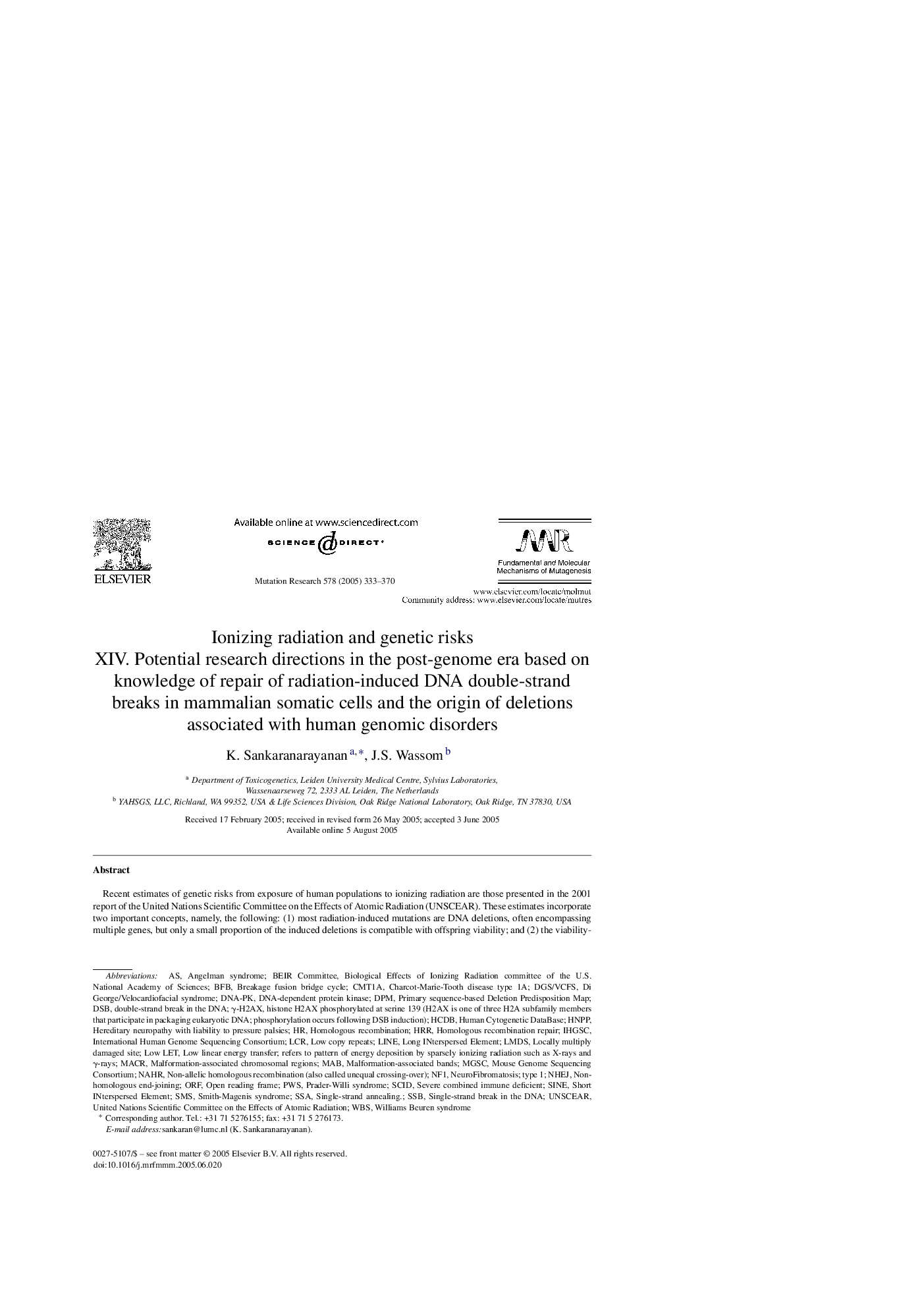| Article ID | Journal | Published Year | Pages | File Type |
|---|---|---|---|---|
| 9909036 | Mutation Research/Fundamental and Molecular Mechanisms of Mutagenesis | 2005 | 38 Pages |
Abstract
We hypothesize that: (a) in spermatogonial stem cells, NHEJ is probably the principal mechanism underlying the origin of radiation-induced deletions, although SSA and NAHR may also be involved to some extent, especially at low doses; and (b) in irradiated oocytes, NAHR is likely to be the main mechanism for generating deletions. We suggest future research possibilities, including the development of models for identifying regions of the genome that are susceptible to radiation-induced deletions. Such efforts may have particular significance in the context of the estimation of genetic risks of radiation exposure of human females, a problem that is still with us.
Keywords
LCRLMDSWBSCMT1AUNSCEARNAHRDNA-PKSSBsevere combined immune deficientDSBdpmHNPPmAbSCIDγ-H2AXHRRBFBPWSNHEJSSAORFNF1SINEgenomic disordersDNA double-strand break repairHomologous recombination repairLow copy repeatsLINEAngelman SyndromePrader-Willi syndromeSmith-Magenis syndromenon-homologous end-joiningShort interspersed elementlong interspersed elementopen reading frameMacrHomologous recombinationNeurofibromatosishereditary neuropathy with liability to pressure palsiesType 1DNA-dependent protein kinaseSMS
Related Topics
Life Sciences
Biochemistry, Genetics and Molecular Biology
Cancer Research
Authors
K. Sankaranarayanan, J.S. Wassom,
